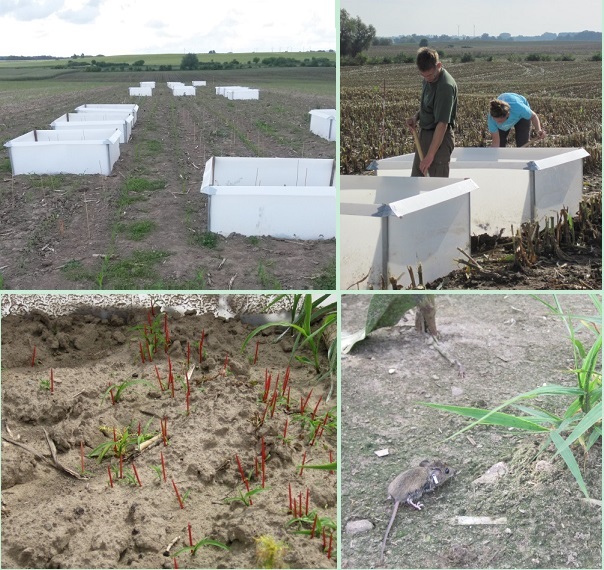Quantifying the degree of seed limitation in an agricultural weed
A weed population in an agricultural field can be characterized by the degree of seed and establishment limitation. I want to quantify the magnitude of seed limitation and examine one of the factors that contributes to establishment limitation. In agricultural fields, density of available seeds is thought to be the most limiting factor in weed density (mainly seed limited). In that case, any factor that limits the availability of seeds will lead to a decrease in weed population density.
An experiment on three continuous maize fields was established in which I monitored the germination and establishment of augmented Echinochloa crus-galli (L.) P.B. (barnyard grass) seeds over two years. Half the plots were protected from seed predators by plastic frames that remained in the field the whole two years. The seeded plots were not exposed to herbicides that could affect barnyard grass.
I was interested in the following questions:
- Is a population of E. crus-galli in a continuous maize field predominantly seed limited?
- Is the degree of seed limitation consistent over the three fields?
- To what extend dormancy is contributing to seed limitation.
- How much does seed predation contribute to establishment limitation and can it contribute to a sustainable reduction in weed abundance?

